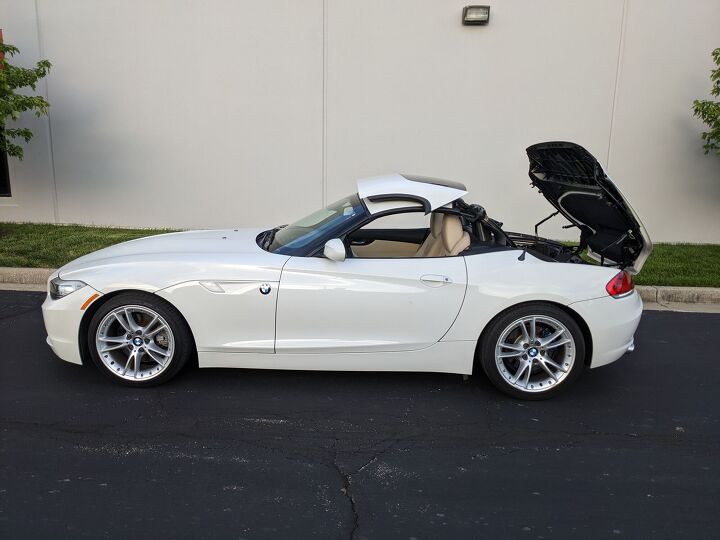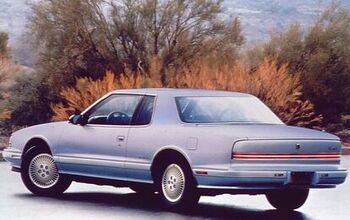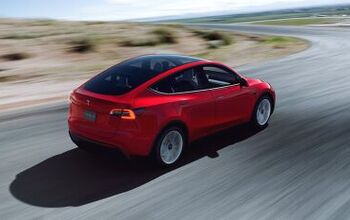Used Car Review: The 2010 BMW Z4, an Extinct Metal Roof Convertible Experience

Back in February, I purchased an old Z4, one of the prior decade’s smattering of folding hardtop convertibles. Nearly extinct today, such a roof arrangement is reserved for high-end European exotica, the C8 Corvette, and the Mazda Miata RF. Over these last months, the past-tense nature of the car I’d bought came to mind more than once. And that’s unfortunate because the Z4 is pretty, pretty good.
I got a good impression of how the BMW fared for comfort on the drive from Nashville to Cincinnati. During the trip north I got familiar with the (optional) bevy of seat adjustments the Z4 offered: Side bolsters can squeeze, the lower seat cushion has a sliding extension, and the power lumbar fills in wherever needed. The seats have a good amount of height adjustment, though taller drivers will find they run out of headroom if the seat isn’t fairly low.
At 6 feet and with longer legs, I don’t have an issue finding a comfortable driving position. The seat slides back far enough, but I’m against the rear wall. Anybody over 6’2” or so will be uncomfortable with regard to head or leg room, or both. Getting in and out is easier than you might expect. Though the apertures look low, the seat is far enough down that hitting one’s head is not a worry. Exiting requires a bit of flexibility, and there are no grab bars to be found.
Once inside, the decade-plus-old cabin presents itself well. Materials are of good quality, with (optional) real wood and faux stitching across the dash. The Z’s simple interior design helps it age well, as do the circular climate controls that are unique to the model. Buttons give good feedback when pressed, though there’s a lack of consistent feel between the higher-quality climate controls and wheel buttons and lower-quality ones on the stereo.
Ringed in chrome, climate controls are easy to understand. There’s a temperature setting for passenger and driver, fan speed, and bi-level adjustment. Climate control was an optional extra, and grants an Auto mode I don’t use. Air conditioning cools the small cabin easily on hot days, though the fan gets a bit blustery sounding on level four or five.
Most all equipment is powered (and optional), and the heated seats warm up very quickly on cold days. Absent is any seat ventilation, which should be included. For better or worse there’s a general feeling of The Old School in here, as there’s no screen (optional), no parking sensors, and no camera. Drivers become quickly reacquainted with looking over the shoulder while reversing.
The stereo sounds nice and maintains decent fidelity when the top is down. There’s slightly too much bass, an issue that persists even with a -3 setting on the tuner. Credit the large subwoofers behind the seats, part of the optional Professional stereo package. Stereo knobs for tuning and volume are too small, though the controls are replicated on the steering wheel. There’s Bluetooth for phones which is easy to pair, but nothing for streaming music.
Gauges are clear and easy to read, though may be small for those used to a screen presentation or a more traditional gauge size. While levers and switches fall easily to hand, the turn signal and high-beam stalk are right above the cruise control lever, which is identical in look and feel, and operated using the exact same methodology. They’re so close together that more than once when attempting to activate the cruise control, I’ve flashed my brights at the driver in front. Setting the cruise control presents a cool green LED square that slides smoothly from 0 on the speedo to wherever you’ve set it.
Part of the turn signal lever is the trip computer, which contains several different menus that allow more car customization than one might expect. The hieroglyphics require the use of the owner’s manual, but reward with Twilight Sentinel features, optional beeps and flashes for locking and unlocking, and even a triple lane change blink from activating the turn signal lightly. Exterior greetings via white LED light (under door handles and puddle lamps) and orange ambient interior lighting look nice at night, but are part of an optional lighting package.
Within the menus is the information on servicing, temperature, tire pressure, and oil level, which lead to my first fault: The oil level sensor is nonoperational and has been since I took delivery. This a common problem, but an important one as BMW removed dipsticks long ago. I’ll have that addressed at my first service.
Once the adjusting and fiddling are finished, the 3.0-liter inline-six is fired up via the start button (optional). 255 silky smooth horsepowers and 220 torques shift through a six-speed automatic that’s rarely caught off-guard. One of the better automatics I’ve experienced in recent memory, there are only occasional hesitations when a quick downshift is requested and the car is in Normal mode. More on that in a moment.
Though it’s low to the ground, visibility is generally good to the front, side, and blind spot areas. The side glass extends well toward the rear, and the lack of a B-pillar means blind spot detection (not available) isn’t missed. The view out the rear is compromised by a high deck and small rear window which means reversing into regular parking spaces with tall curbs is a bad idea. Parallel parking isn’t fun either, as it’s difficult to see where the back of the car is.
The front view takes some getting used to as well, as the long hood is plenty visible to the driver but its corners are not. That’s especially true when maneuvering around taller obstacles since it’s impossible to see over the high fender. Such situations call for a head out the window.
Visibility concerns fade in most driving situations, especially when the Z is pointed at a curvy road. The engine is willing and responsive, and the steering is accurate if a bit dead. Compensating for this is excellent grip from Bridgestone Potenza run-flat tires. Throw it at a corner and the Z hangs on tight and doesn’t ask for a slower pace.
Everything feels balanced as the car pivots on command and shrinks around you. On occasion, a flat throttle reminds us this is the 255-horse 30i and not the twin-turbo 300-horse 35i, but it’s not a concern in most instances. The ride is firm, but in keeping with the roadster genre. It’s a big adjustment coming from the GS, which now seems like a very padded noise-deprivation chamber that rides high in the air.
The optional M-Sport package adds adjustable transmission programming via Normal, Sport, and Sport+ modes. Both Sport settings make the dampers firmer, and the shift logic much more aggressive. Notably, activating Sport+ turns off the traction control.
Manual paddles can be activated on the fly temporarily, or permanently by switching the shifter into manual mode. Their operation is unusual in that both paddles can change gears up (push away) and down (pull toward). The paddles have a very expensive feel and are made of solid polished metal.
The firm dampers are notable in the Sport modes, and things end up a bit too jiggly: The car feels nervous over rough pavement. Sport is a better compromise than Sport+ unless the pavement is very smooth. In all situations, the grip of the tires (225/40R18 front, 255/35R18 rear) brings with it road noise. It’s not noticeable until speeds are over 45 miles per hour or so, but at freeway speeds, there’s a constant hum. Tramlining occurs as well.
The tire noise is perhaps more notable because wind noise is less than expected. A solid roof, lots of rubber sealing, and tight joins at the roof panels mean the most wind noise you’ll hear is from the side mirrors. Despite the road noise, it’s easy to go way too fast in everyday drives. Without a careful eye on the speedo, the Z4 will settle into its own pace in the upper two or low three-digit range.
All driving is accompanied by a throttle pedal with a good amount of resistance that’s immediately easy to modulate. The brakes are easy to learn as well, though the pedal is a bit softer than may be expected. Disclaimer here that it’s 13 years old, so other examples may vary.
Once the weather warmed to an almost acceptable level in the low 50s, it was convertible time. One button and 16 seconds is all it takes, as the three total segments sandwich themselves into the trunk. Top-down operation around town has limited buffeting in the cabin if the winds are calm, and driving on the freeway sans roof is acceptable if the side windows are up.
Practicality is not the aim of this sort of car, but it’s not as bad as one might assume. Storage space inside is very limited: There’s a small parcel shelf behind the seats with a net, and a ski pass-through to the trunk (optional). The trunk itself is large and has a nice, flat cargo area with the trunk partition stowed away.
To open the roof the partition must be in place, at which point cargo access is reduced to a slot for a soft bag. It takes planning if cargo is involved and the top will be down, in an order of operations way. There’s a cargo access mode activated via the remote, which will lift the roof panels so the partition can be moved temporarily, and items loaded or unloaded.
Roof operation from the remote is a nice showy touch, though it can only be used if within 10 feet of the car. And only if the partition is down. And only if it’s parked on flat enough ground that the gyroscopic sensor says it’s okay. Processes and procedures are very German.
Overall the Z4 has impressed me with its enthusiastic personality and excellent handling. Miles per gallon have varied from 25 to 30 per tank, dependent upon the mix of highway usage and country joyriding. Beyond the facts and figures and calculations, at the push of a button and a moment’s wait, a routine drive becomes something fun. That’s just what I wanted.
[Images © 2023 Corey Lewis/The Truth About Cars]
Become a TTAC insider. Get the latest news, features, TTAC takes, and everything else that gets to the truth about cars first by subscribing to our newsletter.

Interested in lots of cars and their various historical contexts. Started writing articles for TTAC in late 2016, when my first posts were QOTDs. From there I started a few new series like Rare Rides, Buy/Drive/Burn, Abandoned History, and most recently Rare Rides Icons. Operating from a home base in Cincinnati, Ohio, a relative auto journalist dead zone. Many of my articles are prompted by something I'll see on social media that sparks my interest and causes me to research. Finding articles and information from the early days of the internet and beyond that covers the little details lost to time: trim packages, color and wheel choices, interior fabrics. Beyond those, I'm fascinated by automotive industry experiments, both failures and successes. Lately I've taken an interest in AI, and generating "what if" type images for car models long dead. Reincarnating a modern Toyota Paseo, Lincoln Mark IX, or Isuzu Trooper through a text prompt is fun. Fun to post them on Twitter too, and watch people overreact. To that end, the social media I use most is Twitter, @CoreyLewis86. I also contribute pieces for Forbes Wheels and Forbes Home.
More by Corey Lewis
Latest Car Reviews
Read moreLatest Product Reviews
Read moreRecent Comments
- Zerofoo @VoGhost - The earth is in a 12,000 year long warming cycle. Before that most of North America was covered by a glacier 2 miles thick in some places. Where did that glacier go? Industrial CO2 emissions didn't cause the melt. Climate change frauds have done a masterful job correlating .04% of our atmosphere with a 12,000 year warming trend and then blaming human industrial activity for something that long predates those human activities. Human caused climate change is a lie.
- Probert They already have hybrids, but these won't ever be them as they are built on the modular E-GMP skateboard.
- Justin You guys still looking for that sportbak? I just saw one on the Facebook marketplace in Arizona
- 28-Cars-Later I cannot remember what happens now, but there are whiteblocks in this period which develop a "tick" like sound which indicates they are toast (maybe head gasket?). Ten or so years ago I looked at an '03 or '04 S60 (I forget why) and I brought my Volvo indy along to tell me if it was worth my time - it ticked and that's when I learned this. This XC90 is probably worth about $300 as it sits, not kidding, and it will cost you conservatively $2500 for an engine swap (all the ones I see on car-part.com have north of 130K miles starting at $1,100 and that's not including freight to a shop, shop labor, other internals to do such as timing belt while engine out etc).
- 28-Cars-Later Ford reported it lost $132,000 for each of its 10,000 electric vehicles sold in the first quarter of 2024, according to CNN. The sales were down 20 percent from the first quarter of 2023 and would “drag down earnings for the company overall.”The losses include “hundreds of millions being spent on research and development of the next generation of EVs for Ford. Those investments are years away from paying off.” [if they ever are recouped] Ford is the only major carmaker breaking out EV numbers by themselves. But other marques likely suffer similar losses. https://www.zerohedge.com/political/fords-120000-loss-vehicle-shows-california-ev-goals-are-impossible Given these facts, how did Tesla ever produce anything in volume let alone profit?
















































Comments
Join the conversation
Corey - I think I am going to issue a fatwa demanding a cool kids car meetup in July somewhere in the Ohio region.
Very nice, that has my favorite BMW interior color scheme. Light tan leather and black, with the classic orange illumination on the dash features and no giant screen. I had a 128i that was similar.
However, regarding the headline, does the MX-5 RF not count as a hard top convertible? Not quite extinct yet.